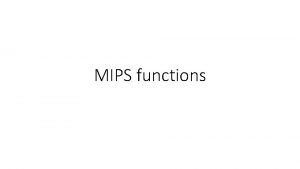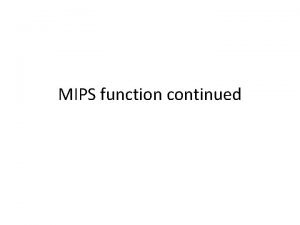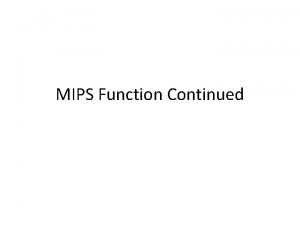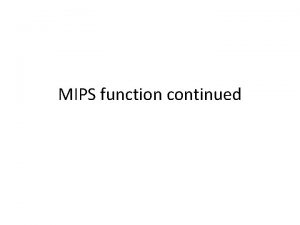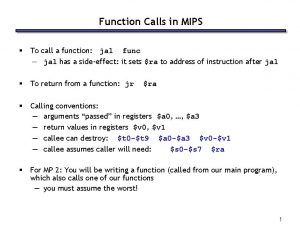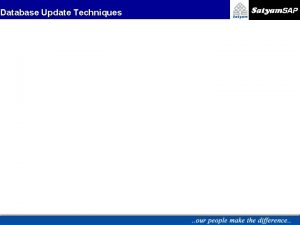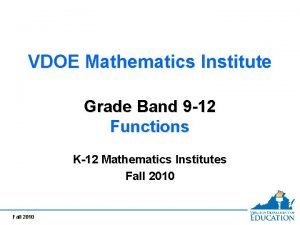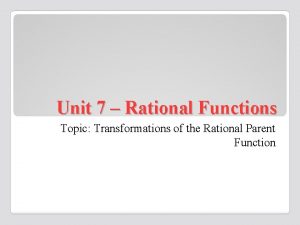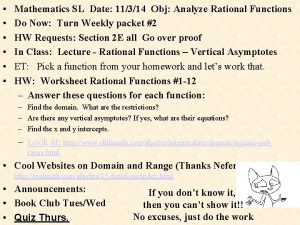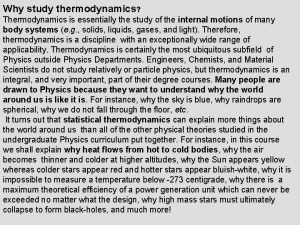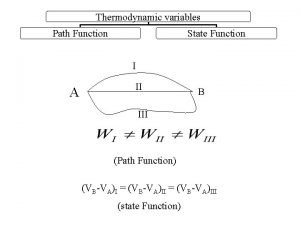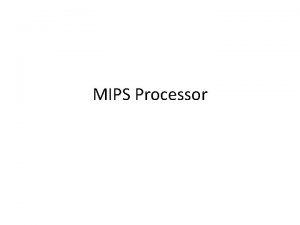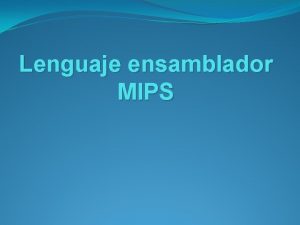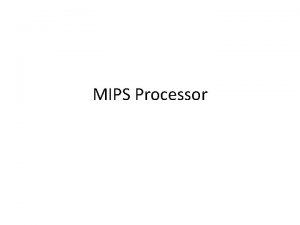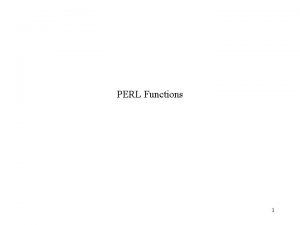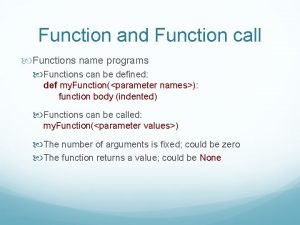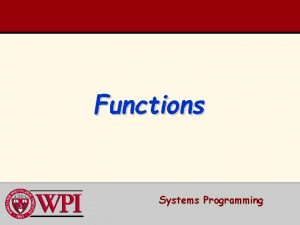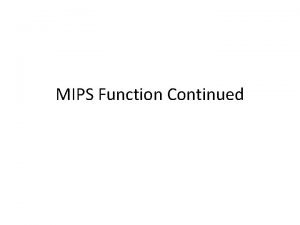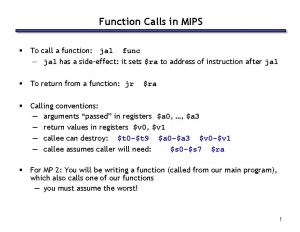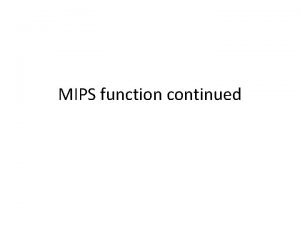MIPS Functions Questions A MIPS function is called


















- Slides: 18

MIPS Functions

Questions A MIPS function is called by the jal instruction, which does two things: 1) going to the address of the first instruction in the function, 2) passing the arguments in $a 0 to $a 3.

Questions A MIPS function must be ended by the jr $ra instruction.

Questions MIPS functions are stored in a different part in the memory and not in the same part as the main function.

Questions A MIPS function has explicitly declare a name along with the list of arguments to be passed to it, including the names and the types.

Questions A function in MIPS cannot have loops.

Questions In MIPS, the name of a function is a special data type.

Questions The jal L 1 instruction jumps to L 1, and saves the address of L 1 into $ra.

Questions Suppose $s 0, $v 0, and $a 0 are holding 60, 0, and 35, respectively. After the program executes till p 9 L 2, what will be the value in $v 0? jal p 9 L 1 j p 9 L 2 p 9 L 1: add $v 0, $a 0 blt $v 0, $s 0, p 9 L 1 jr $ra p 9 L 2: (a) 100 (b) 70 (c) The program will never run to p 9 L 2. (d) None of the above.


MIPS Calling Conventions • MIPS assembly follows the following convention in using registers • $a 0 - $a 3: four argument registers in which to pass parameters • $v 0 - $v 1: two value registers in which to return values • $ra: one return address register to return to the point of origin 6/11/2021 week 04 -3. ppt 11

MIPS Conventions • Quite often, our function needs to use some registers to do dome calculation. So we will modify the values of them. • We can use $t 0 -$t 9 freely inside a function, because the caller does not expect the values inside $t 0 -$t 9 to stay the same after the function call. • But, the caller do expect the values in $s 0 to $s 7 to be the same after a function call.

MIPS Conventions • So, just try to avoid using $s 0 and $s 7 inside a function whenever possible. • But what if do need it? Such occasions will arise…

Stack • So, if we do have to use $s 0 - $s 7, we MUST save it somewhere before entering the main part of the function, and restore it before we return (before we execute “jr $ra”). • In MIPS, we save them in the stack. • Stack is a part in the memory allocated for functions. It starts at 0 x 7 ffffffc and grows down as we add more stuffs to it. • Stack is “first in last out. ”

$sp • The top address of the stack, the address of the first word that is storing value, is (should be) always stored in $sp. • So, adding a word into the stack (pushing a word onto the stack) is a two-step thing, because you have to maintain the correctness of $sp: • addi $sp, -4 • sw $s 0, 0($sp)

Suppose we want to

Stack and $sp • Suppose we want to store a/2 in $s 0. • How do we get a/2? • At the beginning, we do • addi $sp, -4 • sw $s 0, 0($sp) • At the end, we do • lw $s 0, 0($sp) • addi $sp, 4

A: main: . data. word 12, 34, 67, 1, 45, 90, 11, 33, 67, 19. text. globl main la $s 7, A li $s 0, 0 #i li $s 1, 0 #res li $s 6, 9 loop: sll $t 0, $s 0, 2 add $t 0, $s 7 lw $a 0, 0($t 0) lw $a 1, 4($t 0) jal weirdfun add $s 1, $v 0 addi $s 0, 2 blt $s 0, $s 6, loop done: li $v 0, 10 syscall weirdfun: addi $sp, -4 sw $s 0, 0($sp) srl $s 0, $a 0, 1 add $t 0, $a 0 add $t 0, $a 1 sub $t 0, $s 0 ori $v 0, $t 0, 0 lw $s 0, 0($sp) addi $sp, 4 jr $ra
 Mips functions
Mips functions Mips recursive
Mips recursive Mips nested functions
Mips nested functions Mips recursion
Mips recursion Mips function call
Mips function call The ciliary escalator functions by moving microbes
The ciliary escalator functions by moving microbes What is object complement and examples
What is object complement and examples Absolute value as a piecewise function
Absolute value as a piecewise function Evaluating functions
Evaluating functions Evaluating functions and operations on functions
Evaluating functions and operations on functions Database commit is triggered by
Database commit is triggered by Rational function parent function
Rational function parent function Parent function for rational functions
Parent function for rational functions Exponential function vocabulary
Exponential function vocabulary Function notation table
Function notation table Ib math sl rational functions questions
Ib math sl rational functions questions Unit 4 lesson 4 factoring to solve quadratic equations
Unit 4 lesson 4 factoring to solve quadratic equations Why do we study thermodynamics
Why do we study thermodynamics Pressure is state function or path function
Pressure is state function or path function
